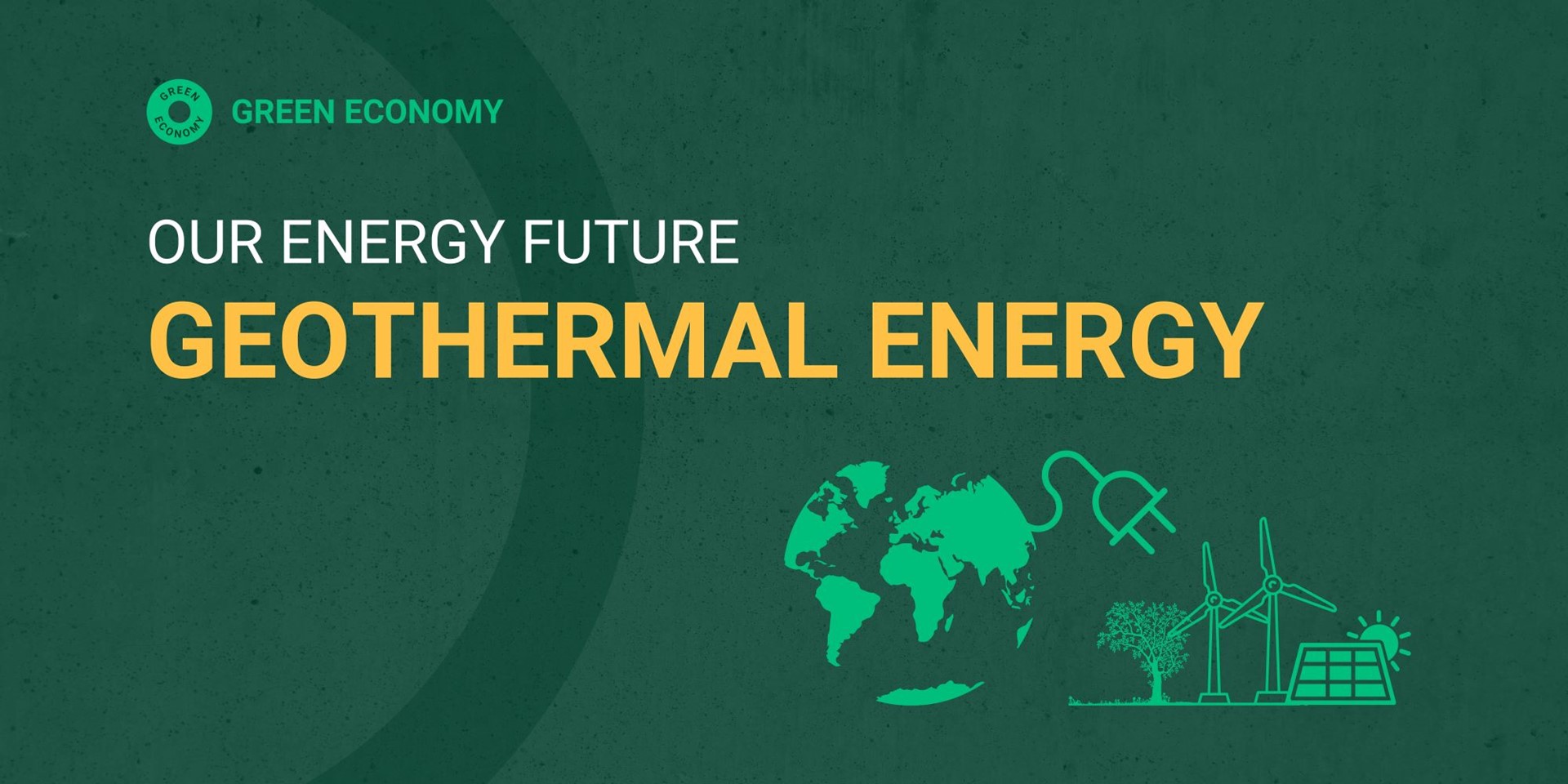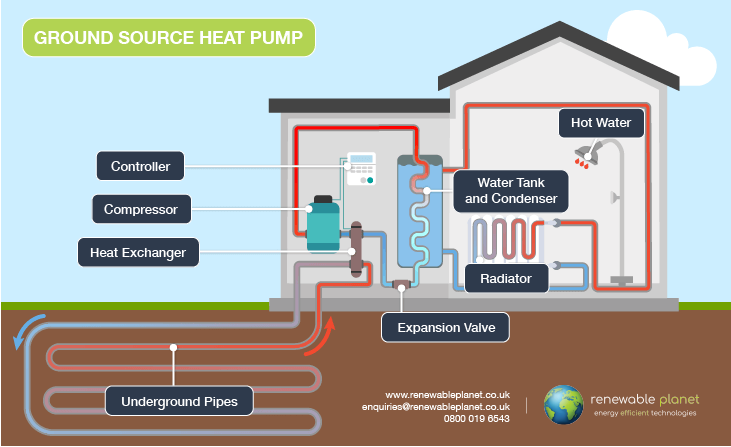Our Energy Future: Geothermal Energy
Read time: 4 minutes

Read time: 4 minutes

Geothermal energy is a sustainable energy source produced by tapping into the natural heat that exists within the Earth. It’s considered a reliable energy source given the heat generated within the Earth is constant.
Geothermal energy can be accessed from a few metres to a few kilometres below ground and extracted using either shallow or deep geothermal technologies.
Shallow geothermal energy is stored at depths of up to 500m and requires the use of ground source heat pumps to extract heat. The temperatures accessed by shallow geothermal technologies range from 10 to 25C and is stored within soil and rocks, aquifers (known as groundwater), and flooded mines.
Ground source heat pumps (GSHPs) can only extract heat from soil or water stored under the Earth’s surface up to depths of around 200m. This heat doesn’t come from the Earth’s core, but rather from the sun heating the Earth’s surface. However, geothermal energy is broadly defined as heat emanating from the Earth’s core, so it is inaccurate to say that heat pumps use geothermal energy to heat buildings.
Given the UK’s legacy of mining, there are now over 2,000 abandoned mines across the UK. Once flooded, water within these mines can be used for geothermal heating, colling, and as underground energy storage. Water temperatures within these mines sit between 10 to 15C, but deeper mines could reach higher temperatures.
Open-loop configurations are used to abstract and discharge water from different zones within a mine. Using this water for geothermal energy adds value to otherwise dormant mines.
According to research from The Coal Authority, roughly 25 per cent of UK homes are situated in former coalfield areas with mine water offering decarbonised heat opportunities.
Deep geothermal energy is accessed by drilling wells and boreholes to reach heat supplies deep within the earth. The heat accessed through these processes is used for commercial and domestic purposes, industrial processes, agriculture, and power generation. The two systems used to access deep geothermal energy include:


The International Energy Agency (IEA) estimates that the UK has installed roughly 49,000 GSHP systems, generating approximately 1,370 GWh of heat each year. Overall, according to these figures, geothermal technologies in the UK accounted for less than 0.3 per cent of the UK’s annual heat demand.
By comparison, other European countries are far ahead of the UK. Germany had over 440,000 installed systems in 2020, while France hit 210,000 in 2018. Stronger policy encouraging the uptake of GSHPs could help bolster the UK geothermal heat share.


The Boiler Upgrade Scheme, which started in April 2022, offers capital grants of up to £7,500 for GSHPs. However, a GSHP can cost around £24,000 to install if the loop is buried in trenches around a site, or as much as £49,000 if a borehole needs to be dug, meaning the subsidy offered by the Boiler Upgrade Scheme may not be enough to encourage businesses to invest in the technology.
Another opportunity lies in repurposing mineshafts and boreholes previously used for fossil fuel extraction to service geothermal energy. Boreholes drilled to access fossil fuels can be repurposed to reduce the cost of geothermal energy projects by as much as 40 per cent, meaning organisations with sites situated near a borehole or mineshaft will see the greatest cost savings and benefits.
(Pictured left: a ground source heat pump can extract heat from water and soil beneath the Earth's surface. Diagram provided by Renewable Planet)
In spite of the opportunity presented by redundant mines and geological sites across the UK, location remains an issue for geothermal energy generation. According to The Department for Energy and Climate Change, the UK only has “a few areas where rocks are hot enough to support electricity generation.” Further, geothermal heat resources are limited by the need to locate geothermal power plants in close proximity to these sites, presenting high start-up and relocation costs.
Cost is another key limitation for geothermal energy. A study conducted by the International Renewable Energy Agency (IREA) identified geothermal energy as the second most expensive renewable energy power source, second to concentrated solar power (CSP). IREA’s research states the total installed cost of geothermal energy in 2021 was $3,991 per kW of energy produced, compared to $2,353 for bioenergy, $857 for solar PV, $1,325 for onshore wind and $2,858 for offshore wind.
Finally, the environmental impact of this renewable energy source must also be considered. Firstly, the extraction of geothermal energy can impact subsurface temperatures and hydrological systems if not managed properly, leading to ecosystem alterations and destruction to aquatic habitats.
Another concern is the increased chance of seismic activity that occurs near geothermal power. The practices used to extract geothermal energy can cause fissures in the Earth’s crust, the consequence of which is a potential earthquake. Although under proper management the chances of such activity being triggered is low, it is still a recognised risk of geothermal energy extraction.
Want to know more about the future of renewable energy? Visit Green Economy's Our Energy Future guides.
Green Intelligence - straight to your inbox
Share